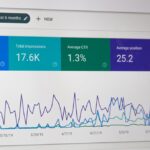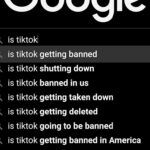Product events serve as pivotal moments in the lifecycle of a product, providing opportunities for companies to showcase new offerings, engage with customers, and generate buzz in the marketplace. These events can take various forms, including product launches, webinars, trade shows, and workshops. Each type of event is designed to create a unique experience that resonates with the target audience, allowing businesses to communicate their value propositions effectively.
The significance of product events lies not only in the immediate sales they can generate but also in the long-term relationships they foster between brands and consumers. The planning and execution of product events require a deep understanding of the target market and the competitive landscape. Companies must consider factors such as timing, location, and format to ensure maximum engagement.
For instance, a tech company launching a new gadget might opt for a live-streamed event to reach a global audience, while a local artisan might choose an intimate workshop setting to connect directly with customers. The choice of event type can significantly influence how the product is perceived and how well it resonates with potential buyers. Therefore, understanding the nuances of product events is crucial for any organization aiming to make a lasting impact in their industry.
Key Takeaways
- Product events are important for creating buzz and excitement around a new product or service.
- Marketing automation plays a crucial role in streamlining and automating the process of promoting and managing product events.
- Creating a targeted audience for product events involves identifying and segmenting potential attendees based on their interests and demographics.
- Personalization in product event marketing helps to create a more personalized and engaging experience for attendees.
- Email marketing is a powerful tool for promoting product events and reaching out to potential attendees.
The Role of Marketing Automation in Product Events
Marketing automation plays a transformative role in the planning and execution of product events. By streamlining various marketing processes, automation tools enable businesses to manage their event campaigns more efficiently. From sending out invitations to tracking RSVPs and managing follow-ups, marketing automation can significantly reduce the manual workload associated with event management.
This efficiency allows marketing teams to focus on crafting compelling content and engaging with attendees rather than getting bogged down by administrative tasks. Moreover, marketing automation facilitates better segmentation and targeting of audiences. By leveraging data analytics, companies can identify specific customer segments that are most likely to be interested in their product events.
This targeted approach not only enhances the relevance of the marketing messages but also increases the likelihood of higher attendance rates. For example, a software company might use automation tools to send personalized invitations to users who have shown interest in similar products or features, thereby increasing engagement and fostering a sense of exclusivity around the event.
Creating a Targeted Audience for Product Events

Creating a targeted audience for product events is essential for maximizing impact and ensuring that marketing efforts yield tangible results. The first step in this process involves gathering data on existing customers and potential leads. This data can be sourced from various channels, including website analytics, social media interactions, and previous event attendance records.
By analyzing this information, businesses can identify key demographics, interests, and behaviors that define their ideal audience. Once the target audience is established, companies can tailor their marketing strategies to resonate with these specific groups. For instance, if a company identifies that a significant portion of its audience consists of young professionals interested in sustainability, it can craft messaging that highlights eco-friendly aspects of its new product.
Additionally, utilizing tools like customer relationship management (CRM) systems can help track interactions and preferences over time, allowing for ongoing refinement of audience targeting strategies. This level of precision not only enhances engagement but also fosters loyalty among attendees who feel that the event speaks directly to their needs and interests.
Utilizing Personalization in Product Event Marketing
| Metrics | Results |
|---|---|
| Increased Engagement | 25% higher click-through rate |
| Conversion Rate | 10% increase in conversion rate |
| Customer Satisfaction | Positive feedback from 90% of customers |
| Revenue | 20% increase in revenue |
Personalization has emerged as a cornerstone of effective marketing strategies, particularly in the context of product events. By tailoring communications and experiences to individual preferences, companies can create a more meaningful connection with their audience. This approach goes beyond simply addressing attendees by name; it involves understanding their unique needs and interests to deliver relevant content that resonates on a personal level.
For example, during a product launch event, organizers might segment attendees based on their previous interactions with the brand or their expressed interests. This segmentation allows for personalized agendas that cater to different groups within the audience. A tech company launching a new software solution could offer breakout sessions focused on specific use cases relevant to different industries represented at the event.
By providing tailored experiences, companies not only enhance attendee satisfaction but also increase the likelihood of conversions as participants feel more connected to the product being showcased.
Leveraging Email Marketing for Product Events
Email marketing remains one of the most effective channels for promoting product events. With its ability to reach targeted audiences directly, email allows companies to communicate essential information about upcoming events while also nurturing relationships with potential attendees. Crafting compelling email campaigns requires careful consideration of content, design, and timing to ensure maximum engagement.
To begin with, the subject line is crucial in capturing attention amidst crowded inboxes. A well-crafted subject line that conveys urgency or exclusivity can significantly increase open rates. Once recipients engage with the email, the content should provide clear details about the event—such as date, time, location (or virtual access), and key highlights—while also incorporating visually appealing elements that align with the brand’s identity.
Additionally, including calls-to-action (CTAs) that encourage recipients to register or learn more about the product can drive conversions effectively. Furthermore, follow-up emails play an essential role in maintaining engagement before and after the event. Sending reminders as the event date approaches helps keep it top-of-mind for attendees.
Post-event emails can include thank-you notes, links to recorded sessions, or additional resources related to the product showcased during the event. This ongoing communication fosters a sense of community and encourages attendees to remain engaged with the brand long after the event concludes.
Integrating Social Media in Product Event Promotion

Social media platforms have become indispensable tools for promoting product events and engaging with audiences in real-time. The interactive nature of social media allows companies to create buzz around their events while also facilitating direct communication with potential attendees. By leveraging platforms such as Facebook, Twitter, Instagram, and LinkedIn, businesses can reach diverse audiences and generate excitement leading up to their events.
Creating shareable content is key to maximizing social media impact. Companies can develop engaging posts that highlight event details, sneak peeks of what attendees can expect, or behind-the-scenes glimpses into preparations. Utilizing hashtags specific to the event can also help create a sense of community among attendees and encourage them to share their experiences online.
For instance, during a product launch event, attendees might be encouraged to post photos or comments using a designated hashtag, amplifying the event’s reach beyond just those physically present. Additionally, live streaming portions of the event on social media platforms can engage those who are unable to attend in person while also creating FOMO (fear of missing out) among potential attendees for future events. Real-time interactions through comments and shares allow brands to gauge audience reactions instantly and adjust their messaging accordingly.
This dynamic engagement not only enhances brand visibility but also fosters a sense of inclusivity among followers who may feel connected to the brand’s journey.
Tracking and Analyzing Data from Product Events
Data tracking and analysis are critical components of evaluating the success of product events. By collecting data before, during, and after an event, companies can gain valuable insights into attendee behavior and preferences that inform future marketing strategies. Various metrics can be monitored, including registration numbers, attendance rates, engagement levels during sessions, and post-event feedback.
Utilizing tools such as event management software can streamline data collection processes by automatically tracking registrations and attendee interactions throughout the event. Post-event surveys are another effective method for gathering qualitative feedback from participants regarding their experiences and perceptions of the product showcased. Analyzing this data allows companies to identify trends and areas for improvement while also measuring return on investment (ROI) for their marketing efforts.
For instance, if data reveals that certain sessions attracted significantly higher attendance than others, organizers can explore what factors contributed to this success—be it speaker reputation, topic relevance, or timing—and apply these insights to future events. Additionally, understanding attendee demographics can help refine targeting strategies for subsequent marketing campaigns, ensuring that future product events resonate even more effectively with desired audiences.
Optimizing Post-Event Follow-Up with Marketing Automation
Post-event follow-up is an often-overlooked aspect of product event marketing that can significantly impact long-term engagement and conversion rates. Marketing automation tools play a vital role in streamlining this process by enabling companies to send timely follow-up communications based on attendee behavior during the event. For example, those who attended specific sessions may receive tailored content related to those topics or products showcased.
Automated follow-up emails can include thank-you messages expressing appreciation for attendance while also providing links to recorded sessions or additional resources related to the products discussed during the event. This not only reinforces key messages but also keeps attendees engaged with the brand long after they leave the event space—whether physical or virtual. Furthermore, leveraging data collected during the event allows companies to segment their follow-up communications effectively.
For instance, leads who expressed interest in purchasing a product may receive targeted offers or invitations for one-on-one consultations with sales representatives. By optimizing post-event follow-up through marketing automation, businesses can nurture leads more effectively and convert interest into tangible sales opportunities over time.















